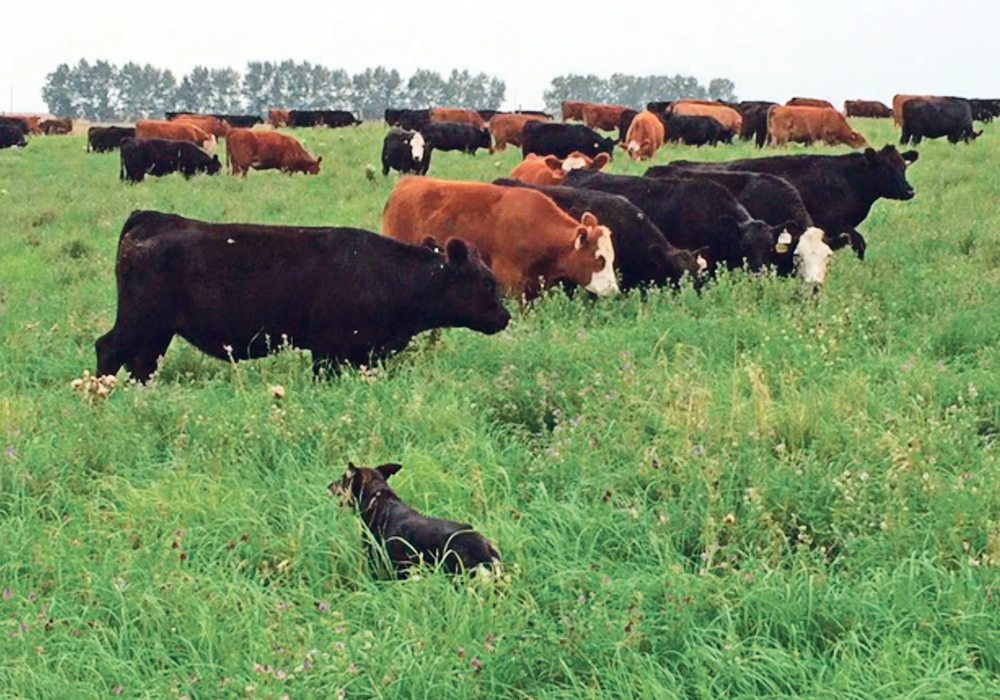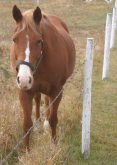A cattle producer from Alberta helps put together grazing plans specific to soil type, moisture levels and elevation
MADDEN, Alta. — When Graeme Finn started farming in Canada, he knew he did not want to follow the parade.
Since moving here from Australia in 1993, he has tested new ideas and experimented on his grazing operation at Madden, west of Calgary.
He was well experienced with drought management in Australia and so he was ready to take on dry conditions, winter and high altitudes in his Canadian grazing program.
Part of that early knowledge came from agriculture school in Australia, where he majored in bovine, pasture and forage management with hands-on practicum courses where the students ran the college farm.
Read Also

Beef check-off collection system aligns across the country
A single and aligned check-off collection system based on where producers live makes the system equal said Chad Ross, Saskatchewan Cattle Association chair.
Today, he and his wife, Heather, own Southern Cross Ranch and run about 80 British-based cows in a year-round grazing program using high legume and annual crop pastures on mostly rented land.
Much of what he has learned came from mentors who became friends he met through forage associations, field days and other events.
“It has taken mentoring. It is not what you know, it is who you know and learning off different people,” Finn said.
There was no manual when this group of full-time graziers started, but working together they all learned more each year and shared that knowledge with other producers who want to develop grazing plans specific to their soil types, moisture levels and elevation.
“There are no rule books to open up. They just figure it and try a few different things,” he said.
Finn’s operation incorporates summer and winter grazing plans.
Swath grazing supplies the winter feed, and the cow-calf pairs have learned to plow through the snow and feed themselves, even in a bitter winter season like 2017-18.
“These girls don’t know any other way but to plow. This year put them to the test,” he said.
The cattle are selected for their temperament and ability to graze.
For swath grazing, the cattle are placed in small paddocks controlled with electric fences. In the summer, he moves the cattle every two to three weeks to give the paddocks time to rest and recover.
He started by seeding oats and barley for swaths, but he wanted a better cleanup in the field and began to experiment with the addition of new crops such as forage rapes.
It is a year-round program in which the annual crops go into the ground toward the end of May and are swathed at the end of September. All the work is custom done because he has been gradually shedding his farm equipment.
The cows start to calve in early May on native rough fescue, and their calves join them in the winter grazing program.
Much of his ranch is at about 4,800 feet above sea level, which takes particular management when selecting forage varieties.
He tests single varieties on small plots to see what grows in this area before a commitment is made to add it to the blend.
While some graziers plant a wide variety of species and may have more than 16 different things growing, he has tailored a mix for what grows in his area. He needs to see what is drought tolerant and what can compete in a mix.
“It was really interesting because they looked interesting by themselves, but once you stuck them in a blend, you really saw how they did,” he said.
“It is just experimenting and learning how to do things and what to do.”
Forage basics such as turnips, radishes, rapes, Italian rye grasses and legumes such as hairy vetches and clovers are all on the menu. The results are strong cows in good condition and the soil is healthier.
The turnips offer plenty of green leafy material and big bulbs as large as a baseball cap. Turnips are about 33 percent protein, and energy is close to 70 percent. More sugar is available for energy when they freeze.
The mixes are also economical. When the costs of swath grazing are calculated, the price of seed, planting, fertilizing and swathing works out to $133.18 per acre. He figures his winter feeding costs tally at 97 cents per cow per day and 54 cents per calf per day.
“This stuff will never replace a good perennial pasture with high legumes like sainfoin, vetch and alfalfa. If I didn’t need winter grazing, I probably wouldn’t use most of this,” he said.
“A good perennial stand will always outperform an annual stand because of the rejuvenation.”
Four years ago Southern Cross Ranch joined four other ranching families to form Union Forage. The company offers different blends of forage crops that can be combined with cereals such as oats, barley and triticale. Many of the forage alternatives are imported from New Zealand.
Every region is different and producers trying these mixes need to be aware of soil types, moisture levels and elevation.
The mixes often include brassicas, and producers are told to be mindful of their soil chemistry.
“If a producer knows he has got sulfur in the water or the soil, then don’t use any of the forage brassicas because they will take it up and you will have a huge problem,” he said.
Summer grazing mixes are available, while some clients plant mixes to go with silage crops. The silage is cut and then the cattle can be turned out in the fall to graze the undergrowth, which remains green and covers the soil.
These mixtures provide an interesting diet for the cows, but soil health also improves.
He conducts soil tests on his land regularly and has seen added tilth and more biological activity below the surface.
Soil tests show his land is short of nitrogen, but phosphorus, potassium and sulfur are adequate and magnesium is quite high.
He describes his system as simple, in which livestock are integrated with cropping programs.
He also participates in educational programs for continuous improvement on the ranch.
Southern Cross has an environmental farm plan and a verified beef plus program and he sits on the Canadian Round Table for Sustainable Beef. He also participated in the McDonald’s pilot project to test the sustainable beef program.
The family earns a living from the land, but he sees the management in broader terms.
“I am doing it for my own good and the future of my two daughters,” he said.
“I am trying to make the soil better, and our costs will be cheaper.”
Earlier this year the Alberta Forage Industry Network recognized Finn for leadership in the sector.
His belief in sharing and passing along knowledge has led him to serve on committees and boards such as the Agricultural Research Extension Council of Alberta, Alberta Beef Producers, the Alberta Crop Industry Development Fund, the Beef Cattle Research Council, the Foothills Forage and Grazing Association, the Canadian Roundtable for Sustainable Beef, the Canada Agri-Food Research Council and the Calgary Stampede International Agriculture Committee. He has also been a mentor for the Young Cattlemen’s Leader Program and the Beef Council Researcher Mentorship Program.


















